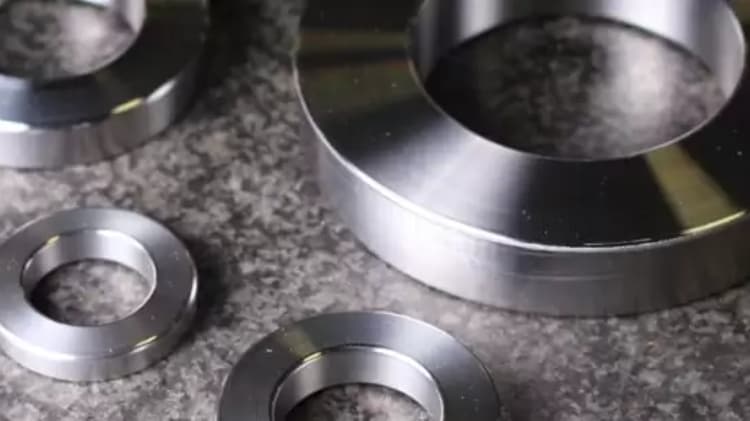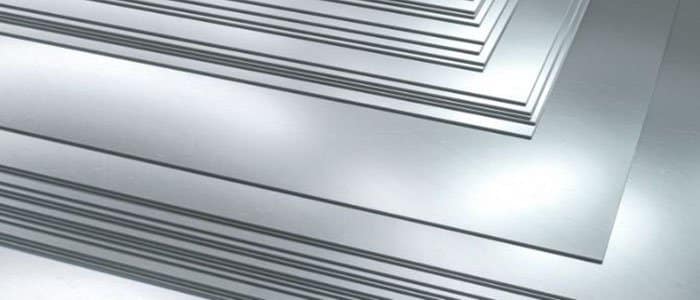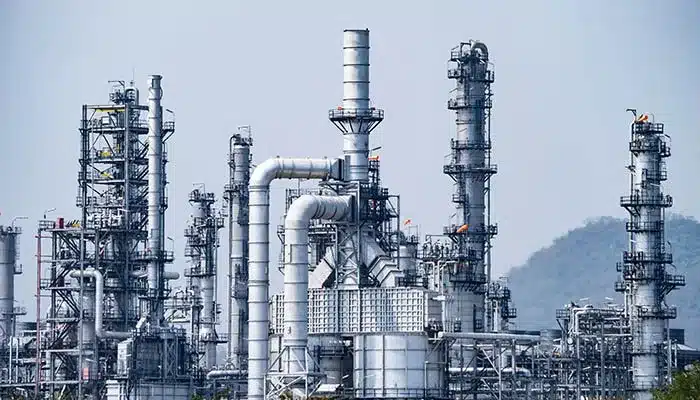In the world of high-performance alloys, certain materials stand out for their unique combination of strength, hardness, and corrosion resistance. 17-4 PH stainless steel is one such material, a workhorse in industries from aerospace to medical devices. But what exactly is it, and why is it so highly sought after?
This comprehensive guide will break down everything you need to know about 17-4 PH, from its chemical composition to its diverse applications.
What is 17-4 PH Stainless Steel?
At its core, 17-4 PH is a chromium-copper precipitation-hardening stainless steel. The “17-4” in its name comes from its composition: approximately 17% chromium and 4% nickel. The “PH” stands for Precipitation Hardening, which is the key to its remarkable properties.
So, what family of stainless steel does it belong to? 17-4 PH is a precipitation-hardening (PH) martensitic stainless steel. This places it in a unique category. It combines the high strength and hardness characteristic of martensitic steels with the excellent corrosion resistance typically found in austenitic stainless steels. This dual nature is achieved through a special heat treatment process that precipitates fine copper particles within the steel’s microstructure, dramatically increasing its strength without heavily compromising its corrosion resistance.

Understanding the “PH”: Precipitation Hardening
The “PH” in 17-4 PH stands for Precipitation Hardening. This is a specialized heat treatment process that sets it apart from other stainless steels.
Think of it like baking a cake. You mix the ingredients (the alloy’s elements), pour them into a pan (casting or forging), and then bake it. The “baking” step is where the magic happens. In precipitation hardening, the metal is heated to a specific temperature and held there for a set time. This causes tiny, hard particles (precipitates) to form uniformly throughout the steel’s microstructure. These particles act like microscopic reinforcements, significantly increasing the material’s strength and hardness without drastically compromising its corrosion resistance.
This process gives 17-4 PH a unique advantage: it can be fabricated in a relatively soft, “solution-treated” condition, machined into a complex shape, and then hardened to achieve high-strength properties.
Chemical Composition: The Building Blocks of Strength
The name “17-4” gives a clue to its primary alloying elements:
- 17% Chromium (Cr):Provides excellent corrosion resistance, a hallmark of stainless steel.
- 4% Nickel (Ni):Contributes to toughness and corrosion resistance.
- ~3-5% Copper (Cu):This is the key element for precipitation hardening. It forms the strengthening precipitates during the heat treatment process.
Here is a typical chemical composition breakdown:
| Element | Percentage (%) |
| Chromium (Cr) | 15.0 – 17.5 |
| Nickel (Ni) | 3.0 – 5.0 |
| Copper (Cu) | 3.0 – 5.0 |
| Manganese (Mn) | ≤ 1.00 |
| Silicon (Si) | ≤ 1.00 |
| Carbon © | ≤ 0.07 |
| Phosphorus (P) | ≤ 0.040 |
| Sulfur (S) | ≤ 0.030 |
| Iron (Fe) | Balance |
This carefully balanced composition is what gives 17-4 PH its signature blend of characteristics.
Key Properties and Advantages
So, why do engineers and designers specify 17-4 PH? It comes down to a powerful combination of properties:
- High Strength:In its peak hardened condition (H900), it can achieve a tensile strength of over 190 ksi (1310 MPa), rivaling some high-strength carbon steels.
- Excellent Corrosion Resistance:It offers superior resistance to corrosion compared to many hardenable stainless steels, particularly in mild atmospheric and freshwater environments.
- Good Toughness and Ductility:Unlike some very hard steels that can be brittle, 17-4 PH maintains a good level of toughness, especially in the lower-strength heat-treated conditions.
- Machinability:In the solution-treated (annealed) condition, it is relatively easy to machine, allowing for the creation of complex parts before the final hardening step.
- Weldability:It can be successfully welded using common techniques, though post-weld heat treatment is often required to restore optimal properties in the heat-affected zone.
Heat Treatment Conditions: Tailoring the Performance
The versatility of 17-4 PH lies in its ability to be heat-treated to different strength levels. This is done by controlling the aging temperature and time. The most common conditions are designated as H900, H1025, H1100, and H1150.
- Condition H900:Aged at 900°F (482°C). This is the highest strength and hardest condition, but with slightly lower toughness. Ideal for parts requiring maximum wear resistance and strength.
- Condition H1025:Aged at 1025°F (552°C). A balance between high strength and improved toughness. A very common choice for many applications.
- Condition H1100:Aged at 1100°F (593°C). Offers a good combination of strength, toughness, and corrosion resistance.
- Condition H1150:Aged at 1150°F (621°C). This is the toughest condition with the highest corrosion resistance, but at a lower strength level.
Choosing the right condition is critical and depends entirely on the specific requirements of the application.
Common Applications of 17-4 PH Stainless Steel
Thanks to its robust profile, you can find 17-4 PH in a wide range of critical components:
- Aerospace:Landing gear components, structural fittings, engine parts, and fasteners where high strength-to-weight ratio is paramount.
- Oil & Gas:Valve bodies, pump shafts, and downhole tooling that must withstand high pressure, corrosive fluids, and abrasive wear.
- Medical & Pharmaceutical:Surgical instruments, dental components, and pump and valve parts for medical devices, valued for its strength, cleanability, and biocompatibility.
- Marine:Propeller shafts, pump and valve parts, and hardware for boats that need to resist saltwater corrosion.
- Nuclear:Used for components in nuclear reactors due to its strength and resistance to stress-corrosion cracking.
- General Engineering:Gears, turbine blades, and mold components for plastic injection molding.
17-4 PH vs. Other Stainless Steels
How does it compare to other common stainless steels?
- 304/316 Austenitic Stainless Steel:304 and 316 are known for excellent corrosion resistance and formability but are relatively soft. 17-4 PH is significantly stronger and harder, making it suitable for wear applications where 304/316 would fail.
- 410/420 Martensitic Stainless Steel:These steels can be hardened to high strength but have lower corrosion resistance and toughness. 17-4 PH offers a much better balance of all three properties.
Conclusion: Is 17-4 PH the Right Choice for You?
17-4 PH stainless steel is a truly remarkable material. It bridges the gap between standard stainless steels and high-strength, low-alloy steels. Its ability to be machined and then hardened to a variety of strength levels makes it an incredibly versatile and cost-effective solution for high-performance parts.
If your project demands a combination of high strength, good corrosion resistance, and toughness, 17-4 PH is almost certainly a material you should consider.
Looking for a reliable supplier of high-quality 17-4 PH stainless steel?
At Daxun Alloy Co., Ltd., we specialize in providing premium-grade 17-4 PH in various forms, including bars, sheets, and plates, all available in different heat-treated conditions to meet your exact specifications. Our team of metallurgical experts is ready to help you select the perfect material for your application.
Contact us today for a quote or to discuss your project requirements!




